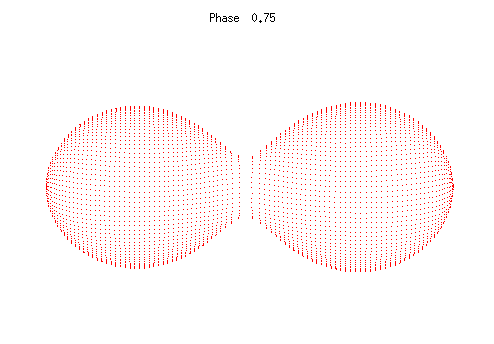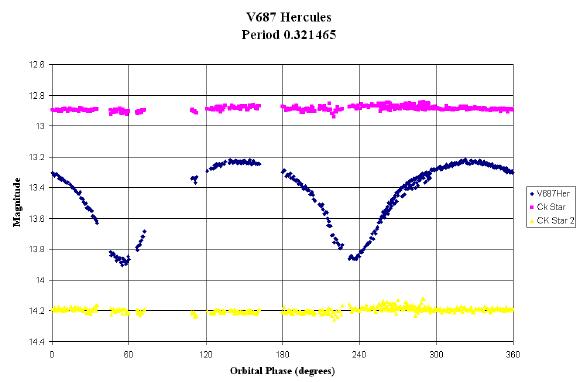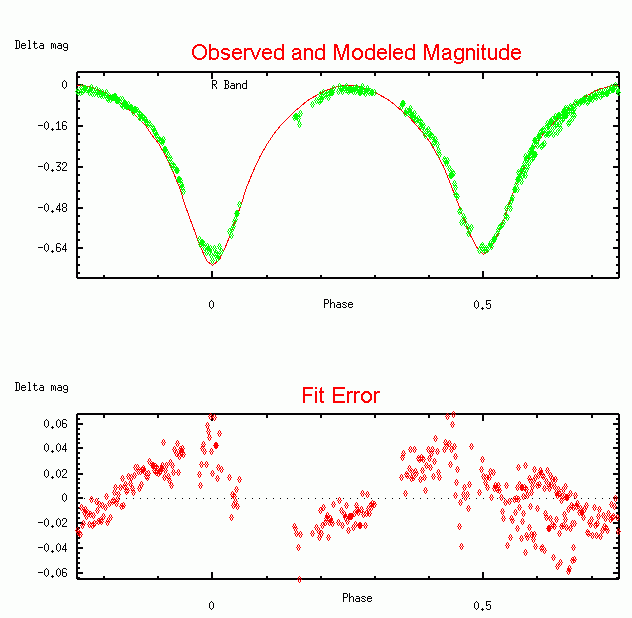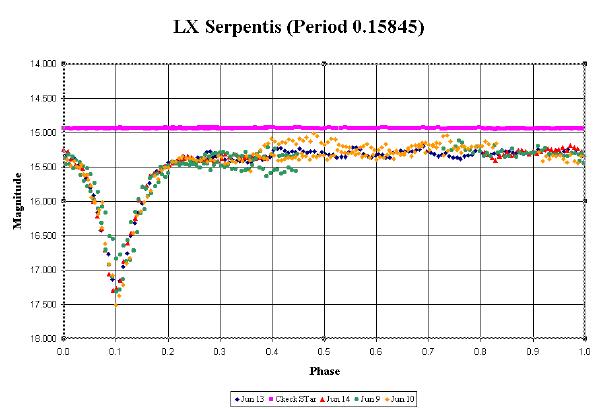
| " " |
|
| Facilities Research Publications Patents Astronomy Software SSC Observatories Contact Us | |||
Short Period Eclipsing Binary SystemsThis summer SSC's observatory has been working two short period eclipsing binary stars. Both systems are close contact or over-contact systems. Their periods have not been observed in about 20 years or more. In conjunction with with Star Cruiser Observatory, we have been measuring LX Serpentis and V687 Hercules. We are looking to a change in orbital period associated with an exchange of mass between the two stars and a loss of angular momentum. The first system observed was V687 Hercules. This system appears to be composed of two stars of very similar magnitude and size. The observations were performed on several nights starting on 21 June 2002 and ending on 2 September 2002. Observations were performed using the OCA 0.55 meter Anza telescope and SSC's new 0.3 meter telescope.  The main challenge of this system is that the orbital period of this system is nearly evenly divisible into 24 hours (approx 7 hours 42 minutes), making it very difficult to obtain full period coverage during short summer nights. While I do not yet have a full cycle of coverage, I have proceeded to use a binary star modeling system titled "Nightfall" under Linux to model the V687 Hercules system.  The fit obtained below was my first attempt at modeling with this software and I am pleased with the results for this initial attempts. The model giving the best emperical fit has the following key prameters:
Apparently the system is composed of two nearly identical G class stars in a overcontact eclipsing binary orbit. The graph below demostrate how well the model fits the observed data.  This work was done unfiltered and the 600nm passband was used as an passband center estimate to create the model above. Better estimates of the relative masses and temperatures will obtained next summer. For those observations photmetric standard BVR filters will be to used to measure this system. As with many such projects weather and equipment problems have conspired to make the task more difficult. In the case of LX Serpentis, no change in eclipse period has been observed within the precision of observations to date. Below is a composite light curve made at SSC and SCO. All photometric measurements were mate without filters to get the best signal to noise ratios.  |
|||
|
|||